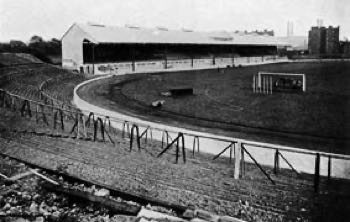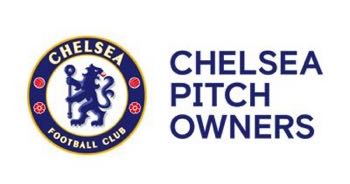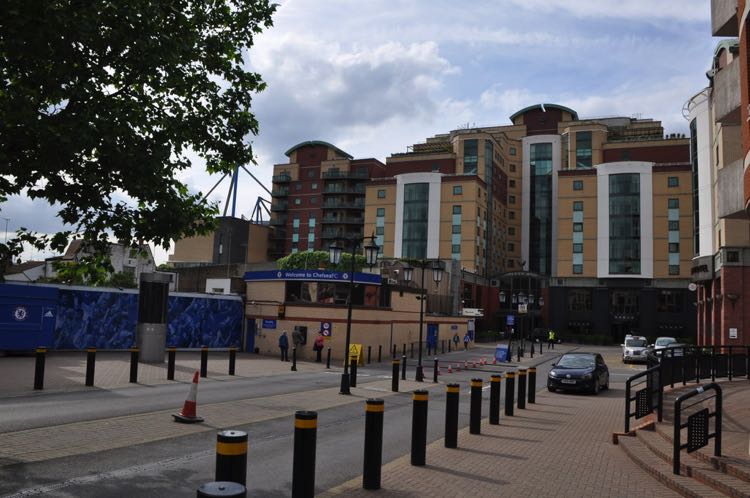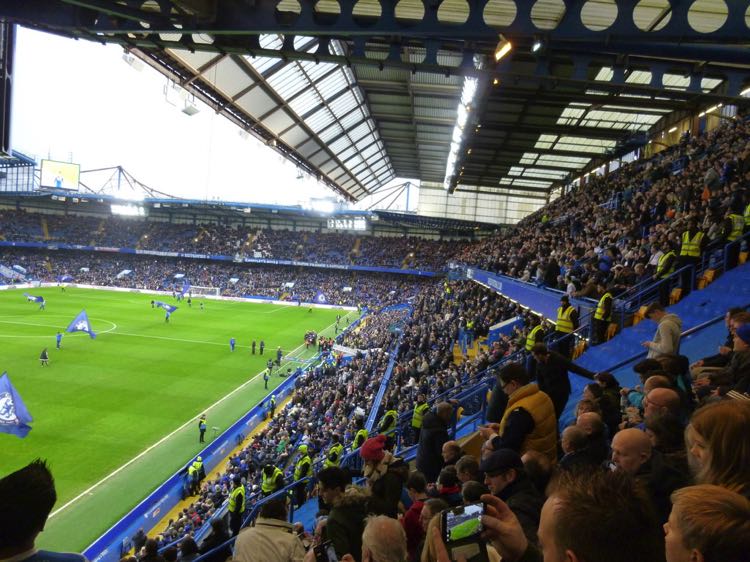When assessing whether or not Chelsea FC own their ground, the short answer is no, they do not currently own Stamford Bridge, despite the stadium serving as the club’s home ground since its creation in 1905. Instead, the Bridge’s freehold is owned by Chelsea Pitch Owners, who purchased both the ground and the club’s naming rights in 1997.
Who Are Chelsea Pitch Owners?
Here we’ll delve a little more into the history and current structure of the ownership of Stamford Bridge.
History of Stamford Bridge Ownership

Following Chelsea’s financial woes in the 1970s that spilled over into the following decade, in which they ran out of funds whilst attempting to carry out a full-scale renovation of Stamford Bridge, they were forced to sell the stadium’s freehold. The ground was then purchased by Marler Estates, a property development company, and this move nearly caused the Blues to lose their beloved stadium.
After owner Ken Bates was able to reunite the club with the Bridge’s freehold in 1992, it became clear that planning was needed to ensure that this would never happen again. The solution: Chelsea Pitch Owners. CPO is a non-profit organisation led by Chelsea fans, who were able to purchase both the Stamford Bridge freehold, including the pitch and the turnstiles, and the naming rights to Chelsea Football Club. Chelsea legend, John Terry, is currently serving as President of the CPO.
How Were the Pitch Owners Able to Purchase the Freehold?
 In 1997, the CPO officially purchased both the freehold and the naming rights to the club. They were able to do so through a £10m loan, which was granted by Chelsea’s parent company, Chelsea Village plc. In return for this loan, the Pitch Owners guaranteed the Blues a lease of 199 years on Stamford Bridge, for which they charged a very small rent in order to satisfy the legal contract between the two.
In 1997, the CPO officially purchased both the freehold and the naming rights to the club. They were able to do so through a £10m loan, which was granted by Chelsea’s parent company, Chelsea Village plc. In return for this loan, the Pitch Owners guaranteed the Blues a lease of 199 years on Stamford Bridge, for which they charged a very small rent in order to satisfy the legal contract between the two.
The idea behind the CPO’s creation was to prevent property developers from once again purchasing Stamford Bridge, if the club were to face future financial troubles. To further ensure this, all CPO shareholders are granted the same voting rights, meaning that no one individual can gain control of the organisation, whether they had a single share or 1,000 shares. It is worth noting that 75% of the shareholders have to be in favour for a decision to be made about using the Chelsea Football Club name.
Furthermore, as the organisation is non-profit, its primary purpose is to repay the money that was originally loaned to it, which has been largely achieved through the sale of shares, not on the stock exchange, but directly to Chelsea fans. By 2011, around 15,000 shares had been sold, and around £1.5m of the debt had been cleared.
Why Did the CPO Purchase the Naming Rights?
As part of their purchase of Stamford Bridge’s freehold, the CPO were also able to purchase the Chelsea Football Club name, which they grant to the club under license, with the only condition to this agreement being that the Blues play home games at the Bridge. This condition makes it pretty tough for any Chelsea owner to move the club to another ground, should they so desire, as this would potentially involve having to remove the name “Chelsea Football Club” from the club entirely.
They would therefore only be allowed to retain the Chelsea identity if 75% of CPO shareholders were in favour of the move, which is something that caused Roman Abramovich numerous headaches in his various attempts to expand Chelsea by either extending Stamford Bridge or moving to a new, larger stadium.
When Did Chelsea Attempt to Buy the Freehold from the CPO?

In October 2011, Chelsea’s ownership attempted to buy purchase the Bridge’s freehold from the CPO, which would allow the club to do as they pleased with the ground, without having to consult the organisation, who had become somewhat of an annoyance for Abramovich.
Bruce Buck, the club’s chairman at the time, stated that the threat of losing the ground had disappeared under Abramovich but many of the fans remained far from convinced. Despite initially appearing a perfect solution to the club’s financial struggles and keeping the fans happy (given they had almost lost their beloved ground), the CPO has started to restrict the owners in what they are able to do, especially when it comes to Stamford Bridge.
For example, after the club’s proposal to re-purchase the freehold from the CPO was brought into a general meeting of their shareholders, just over 60% of votes were in favour, which is a clear majority, but the proposal was denied, as it fell well short of 75%. Since then, there have been numerous other attempts to move Chelsea to a larger ground, yet none of these has been successful, largely due to the difficulty in convincing such a vast portion of the CPO, who, of course, also own the club’s naming rights.
Who Previously Owned Stamford Bridge?

Here we run through some of the former owners of this illustrious stadium.
London Athletic Club
When it first opened in 1877, Stamford Bridge was home to London Athletic Club, the oldest independent track and field club in the world. In the original stadium, an athletics track was built surrounding what would eventually be the football pitch and the things that track lived through before it was finally removed in the 1990s!
The end of Queen Victoria’s reign, two world wars, the moon landing and the opening of the first Greggs, to name but a few, with the latter being very important to Steve Bruce (we’re told). Anyway, this therefore meant that the ground didn’t host a single football match for the first 30 years of its existence, although it did host the 1898 World Championship of shinty!
The Mears Brothers
In 1904, brothers Gus and Joseph Mears, who were London-based businessmen, acquired the lease to Stamford Bridge, with the aim of converting it into a top-class football ground. Having previously offered the ground to Fulham FC, who declined the offer, the Mears chose to found their own football club to inhabit the ground, which became Chelsea.
Under the brothers’ tenure, the ground underwent a number of renovations, with the first Stamford Bridge football stadium, built in 1905 and designed by Archibald Leitch, having an official capacity of 100,000. Later, in the 1970s, the Mears decided to attempt to move the entire stadium northwards and extend it, a very ambitious renovation that was an utter disaster. Only the East Stand was successfully moved, leaving it around 20 metres away from the pitch and the other stands, as the club ran out of money and therefore couldn’t afford to renovate the rest of the stadium.
Through a combination of this disastrous renovation and Chelsea’s poor form, the club was beginning to rapidly decline, and the Mears brothers therefore decided to sell the stadium’s freehold, which was purchased by Marler Estates; a move that led to future owner Ken Bates declaring to one of the brothers, “When this gets out, you’ll be a f**king leper”.
Marler Estates
When Ken Bates purchased Chelsea for £1 in 1982, this deal did not include Stamford Bridge, as the ground had previously been sold off to Marler Estates, a property development company, in return for a million shares. Although Marler had granted Chelsea a seven-year lease at the Bridge, it quickly became apparent that their priority was profit, not football, and they were willing to try outlandish schemes to bulk cash flow cashflow.
The land inhabited by the stadium is highly valuable, due to its location in central London, and for Marler, it would be wasted as a football ground, when it could easily be converted into ridiculously expensive housing. The company’s chairman, David Bulstrode, therefore declared that they would attempt to construct a “much smaller and more compact stadium” at Stamford Bridge, and they were even granted permission from the council to do so. However, if Marler were to go through with this proposal, they would effectively turf Chelsea out of their own ground and would then be legally required to find an alternative home for the Blues, within 15 miles of the Bridge.
Trying to Move Chelsea Away from the Bridge
In order to transform the Stamford Bridge freehold into a more profitable asset, Marler Properties entertained a number of different options of where Chelsea could be moved to, all of which are likely to have any Blues fan sliding down the nearest wall crying.
The first proposal that the company came up with was to offer £3m to purchase Selhurst Park, which Chelsea would then have to share with its current tenants, Crystal Palace, to form a sort of low-budget, south London imitation of the San Siro arrangement between AC and Inter Milan. They also attempted to do this with Craven Cottage, which was also owned by Marler, but thankfully both fell through and were abandoned.
What Other Options Did They Try?
The thought of sharing Selhurst Park or Craven Cottage was a depressing enough proposition for Chelsea fans. But after these ideas were duly abandoned, Marler came up with their most outrageous plan yet. The property developers decided that, to make a proper return on their purchase of Stamford Bridge, they would merge Fulham and QPR to form the horrendously named Fulham Park Rangers. Ironically, there is no such thing as Fulham Park, so we’re not sure where exactly they would be ranging!
Having proposed merging two rival teams, who would then supposedly play at Loftus Road to allow Craven Cottage to be redeveloped into houses, they then decided to throw Chelsea into the mix. The Blues would supposedly leave Stamford Bridge and be forced to share Loftus Road with the newly formed FRP, or Farcical Project Rangers, as they’re known. Meanwhile, the Bridge’s hundred-year history would face a grim conclusion: being converted into a load of four and five-bedroomed apartments for the super rich.
Why Did This Fall Through?
Thankfully, and you will no doubt be aware, Chelsea do not play at Loftus Road, and Fulham Park Rangers is a name reduced to occasionally popping up in the nightmares of both Fulham and QPR fans, who were (obviously) strongly opposed to the merger. The man at the heart of this proposal’s failure was Ken Bates, an incredibly dogged and thoroughly uncompromising bloke who resisted Marler at every turn, buying Chelsea as much time as possible before a market crash in the 1990s saw the property company go bankrupt.
After they went bankrupt, Bates, as Chelsea owner, was then able to reunite the club with their beloved ground, which was thankfully unscathed, but it had been a very close shave. Had it not been for the fortitude of Bates, who was described as “a real bastard to get in a tangle with” by David Mellor, the MP for Putney, the Blues would almost certainly no longer be playing at Stamford Bridge. Once the freehold was finally returned to the club, the CPO was quickly set up (as described earlier) to prevent a similar disaster from occurring in the future.

